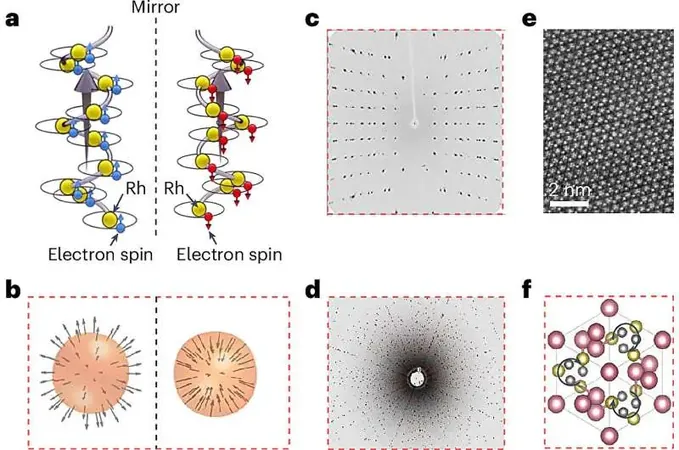
Revolutionary Spin-Powered Crystals Set to Transform Hydrogen Production!
2024-11-29
Author: Emma
In a groundbreaking development for sustainable energy, an international research team has unveiled a new approach to hydrogen production that leverages the unique properties of spin-powered crystals. Water splitting, the process of separating water molecules into hydrogen and oxygen, has long faced efficiency challenges, particularly due to the sluggish kinetics of the oxygen evolution reaction. However, these innovative crystals may hold the key to overcoming these hurdles.
Introduction of Spin-Powered Crystals
Recent findings published in the prestigious journal Nature Energy reveal that researchers have developed special topological chiral crystals composed of rhodium, silicon, tin, and bismuth. These crystals possess unique "chiral" structures—left or right-handed arrangements at the atomic level—that play a significant role in enhancing the efficiency of hydrogen production.
Key Researcher Insights
The lead researcher, Dr. Xia Wang from the Max Planck Institute for Chemical Physics of Solids, describes these crystals as "quantum machines." He states, "By leveraging the unique spin properties of electrons, we’ve created a catalyst that outperforms traditional materials by a staggering factor of 200." This remarkable advancement highlights the crystals' ability to effectively manipulate electron spin, facilitating rapid electron transfer during the oxygen generation process.
Future Possibilities
Professor Binghai Yan, a key member of the research team, acknowledges the continued use of rare elements in the catalysts but expresses optimism for the future: "We are confident that based on our design scheme, we will soon develop highly efficient and sustainable catalysts that minimize reliance on rare materials."
Impact on Renewable Energy
This breakthrough is not merely an academic achievement; it represents a significant step toward a cleaner, greener energy landscape. By streamlining hydrogen production, the new spin-powered catalysts could dramatically reduce costs and enhance the viability of hydrogen as a renewable energy source. This aligns perfectly with global efforts to transition to cleaner energy technologies in the face of climate change.
Conclusion
The research, conducted collaboratively by scientists from the Max Planck Institute CPfS and the Weizmann Institute of Science, exemplifies how advancements in quantum physics can address real-world energy challenges. As the world seeks innovative solutions to meet energy demands sustainably, these spin-powered crystals could be a game-changer in the quest for clean hydrogen production.
Stay tuned for more updates on how this revolutionary technology could reshape the future of renewable energy!









 Brasil (PT)
Brasil (PT)
 Canada (EN)
Canada (EN)
 Chile (ES)
Chile (ES)
 España (ES)
España (ES)
 France (FR)
France (FR)
 Hong Kong (EN)
Hong Kong (EN)
 Italia (IT)
Italia (IT)
 日本 (JA)
日本 (JA)
 Magyarország (HU)
Magyarország (HU)
 Norge (NO)
Norge (NO)
 Polska (PL)
Polska (PL)
 Schweiz (DE)
Schweiz (DE)
 Singapore (EN)
Singapore (EN)
 Sverige (SV)
Sverige (SV)
 Suomi (FI)
Suomi (FI)
 Türkiye (TR)
Türkiye (TR)